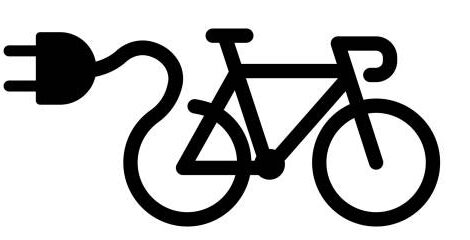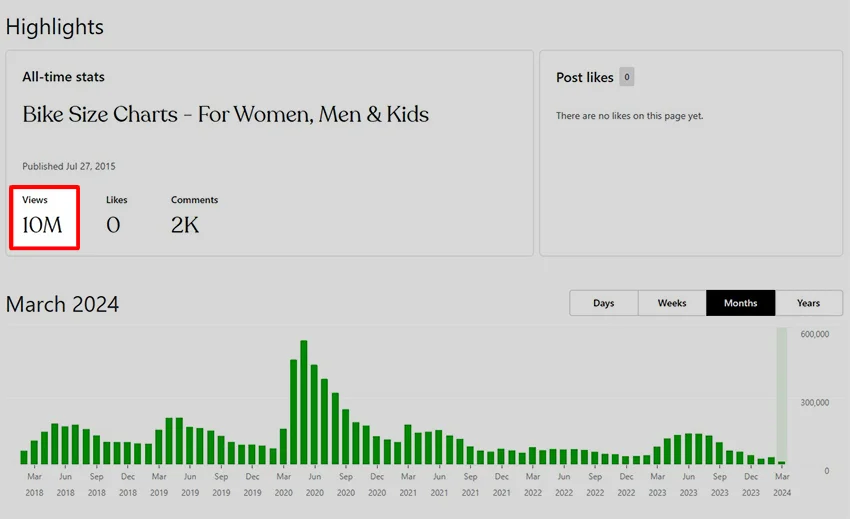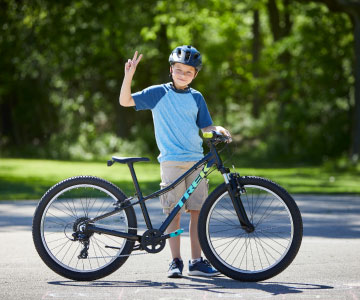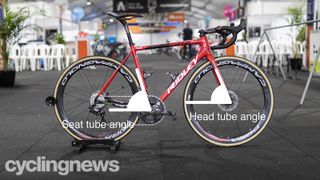How to Choose a Bicycle Frame That Fits You Well
Selecting the correct bicycle size by height is paramount for a comfortable, efficient, and injury-free riding experience. Riding a bicycle that’s either too large or too small can lead to a myriad of issues, detracting from the enjoyment and benefits of cycling. A bike that’s too big often results in overreaching, causing strain on the back, shoulders, and wrists. This can lead to discomfort and even chronic pain over time. Conversely, a bike that’s too small can feel cramped and inefficient, forcing the rider into an awkward position that compromises power output and increases the risk of knee and hip problems. Proper bicycle size by height ensures optimal biomechanics, allowing for a more natural and powerful pedal stroke while minimizing stress on joints and muscles.
The principles of bicycle size by height apply across various types of bikes. Whether one is interested in a road bike for speed and efficiency on paved surfaces, a mountain bike for tackling rugged trails, or a hybrid bike for versatile riding on roads and bike paths, finding the right frame size is crucial. A road bike that’s too large might make it difficult to reach the handlebars comfortably, while a mountain bike that’s too small could compromise handling and stability on technical terrain. Similarly, a hybrid bike with an improper bicycle size by height might not provide the upright and comfortable riding position it’s intended for. By prioritizing proper sizing from the outset, cyclists can ensure that their chosen bike enhances, rather than hinders, their riding experience.
Ignoring the importance of bicycle size by height can lead to a cascade of negative consequences. Beyond immediate discomfort, riding an improperly sized bike can contribute to long-term injuries and decreased performance. Numbness in the hands and feet, lower back pain, knee pain, and neck stiffness are all common complaints among cyclists riding bikes that don’t fit them correctly. Moreover, an ill-fitting bike can compromise a rider’s ability to control the bike effectively, increasing the risk of accidents. Investing the time and effort to determine the appropriate bicycle size by height is an investment in one’s health, safety, and overall enjoyment of cycling. Therefore, understanding the factors that contribute to proper bike fit and utilizing available resources, such as size charts and professional bike fitters, are essential steps in the bike-buying process.
Understanding the Key Measurement: Why Height Matters in Bike Selection
The selection of the correct bicycle size by height is a critical first step in ensuring a comfortable and efficient riding experience. While numerous factors contribute to optimal bike fit, height serves as a primary indicator for determining the appropriate frame size. This is because a rider’s overall stature provides a general guideline for the distance between the seat and the pedals, as well as the reach to the handlebars. Finding the right bicycle size by height is like finding the correct foundation before adding more personal features to the bike.
However, it’s vital to understand that relying solely on height for bicycle size by height selection offers a starting point, not a definitive solution. Individual body proportions, such as inseam length (the distance from the ground to your crotch) and arm length, significantly influence the ideal frame size. For instance, two individuals with the same height may require different frame sizes if one has significantly longer legs than the other. Therefore, while height provides a valuable initial estimate, taking further measurements is essential for refining the bike size selection process.
Think of bicycle size by height as the first filter in a selection process. A bike size chart is a tool to translate your height into a range of potential frame sizes. Most charts will offer a range because, again, height is just one factor. After consulting a chart based on your height, consider your inseam. A longer inseam might suggest choosing a frame size at the higher end of the recommended range, while a shorter inseam may point to a smaller size. Remember that the goal is to achieve a comfortable and efficient riding position that minimizes strain and maximizes power output. This multi-faceted approach to bicycle size by height and proportion will make your cycling experience more enjoyable.
Bike Types and Their Sizing Nuances
Different types of bikes have distinct sizing considerations. A ‘medium’ size in one category might not translate directly to another. Understanding these nuances is crucial when determining the appropriate bicycle size by height. Road bikes, mountain bikes, hybrid bikes, and comfort bikes each cater to different riding styles and body positions, influencing their frame geometry and, consequently, sizing.
Road bikes, designed for speed and efficiency on paved surfaces, typically feature a more aggressive geometry. This often translates to a slightly smaller frame size compared to a comfort bike for a rider of the same height. For example, a person who comfortably fits a 54cm road bike might find a ‘medium’ hybrid bike a better fit. Mountain bikes, built for off-road terrain, often prioritize maneuverability and stability. Their sizing may differ further, sometimes using ‘small,’ ‘medium,’ and ‘large’ designations rather than inch or centimeter measurements. A ‘medium’ mountain bike could correspond to a larger frame size than a ‘medium’ hybrid bike. This is because mountain bike geometry often incorporates a sloping top tube for increased standover clearance.
Hybrid and comfort bikes generally offer a more upright riding posture, leading to a potentially different frame size selection. A rider seeking a relaxed, upright position may opt for a larger frame size in a hybrid or comfort bike compared to a road bike. This allows for greater reach to the handlebars without excessive leaning. Therefore, when choosing a bicycle size by height, it’s imperative to consult size charts specific to the bike type. Always consider the manufacturer’s recommendations and, ideally, test ride bikes from different categories to find the most comfortable and efficient fit. A proper bicycle size by height ensures a safer and more enjoyable riding experience, regardless of the bike type chosen.
Decoding Bike Size Charts: A Practical Guide
Understanding bike size charts is essential for finding the right bicycle size by height. These charts translate your height into a recommended frame size, serving as a crucial starting point in your bike selection journey. Bicycle manufacturers and retailers provide these charts, often differing slightly, so consulting multiple sources is advisable. They commonly use inches, centimeters, or a small/medium/large system to denote frame sizes. Before consulting these charts, accurately measure your height, standing straight against a wall with shoes off. Have someone mark the wall at the highest point of your head, then measure from the floor to the mark.
Bike size charts typically present a range of heights corresponding to each frame size. For instance, a chart might indicate that a person between 5’4″ and 5’7″ (163-170 cm) should consider a small or medium-sized frame. For a road bike, this might translate to a frame size of 52-54 cm. Mountain bike sizing often uses the small/medium/large system more frequently. If you are between sizes, consider your riding style and flexibility. A more aggressive rider might prefer the smaller size for increased maneuverability, while a more relaxed rider may opt for the larger size for added comfort. Remember that bicycle size by height charts are a starting point. Individual body proportions play a significant role.
To illustrate, imagine a person who is 5’10” tall (178 cm) consulting a bike size chart. A reputable manufacturer’s chart might suggest a medium or large frame for a road bike, translating to approximately 56-58 cm. However, if this person has shorter legs than average, a medium frame might be a better fit. Conversely, someone with longer legs might find the large frame more comfortable. It’s crucial to remember that these charts provide a general guideline. Factors beyond height, like inseam and flexibility, influence the final decision. Always prioritize test riding a bike to confirm the fit and ensure it feels comfortable and manageable. Finding the correct bicycle size by height gets easier with practice and understanding.
Beyond Height: The Importance of Inseam and Reach
While height serves as an excellent starting point for determining appropriate bicycle size by height, it is not the only measurement to consider for an optimal fit. Two other crucial factors significantly impact comfort and performance: inseam and reach. These measurements account for variations in body proportions, ensuring that riders of the same height can find bicycles that cater to their individual needs. Overlooking inseam and reach can lead to discomfort, reduced efficiency, and even potential injuries, highlighting the importance of considering these elements during the bicycle selection process. Determining the right bicycle size by height involves a holistic approach.
Inseam, or leg length, is a critical measurement for determining the correct seat height and overall frame size. To measure inseam accurately, stand with your back against a wall, wearing cycling shoes if possible. Place a book between your legs, mimicking the pressure of a bicycle seat. Measure from the top of the book (at the crotch) to the floor. This measurement, typically in inches or centimeters, provides valuable information for selecting a frame size that allows for proper leg extension while pedaling. A bicycle that matches your bicycle size by height and inseam will improve your experience. Too small or too big of bicycle, relative to the rider’s inseam will cause discomfort and could cause an injury.
Reach, on the other hand, refers to the distance between the saddle and the handlebars. It is influenced by both arm length and torso length. A rider with longer arms and torso may require a frame with a longer top tube or a longer stem to achieve a comfortable and efficient riding position. Conversely, a rider with a shorter reach may benefit from a smaller frame or a shorter stem. Determining the ideal reach often involves a test ride and potential adjustments to the stem length or handlebar position. Paying attention to inseam and reach, in addition to bicycle size by height, allows riders to fine-tune their bicycle selection, resulting in a more comfortable, efficient, and enjoyable riding experience. Consulting with a professional at a local bicycle shop is invaluable for achieving the perfect fit.
Test Riding is Crucial: Experiencing the Fit Firsthand
The theoretical match between your height and a bike size chart is just the starting point. Experiencing the bike firsthand through a test ride is paramount before making a purchase. Numbers and charts can guide you, but the true test lies in how the bike feels and handles. A bicycle size by height recommendation might seem perfect on paper, but the reality of riding can reveal subtle discrepancies that affect comfort and control.
Visiting a local bike shop is highly recommended. Bike shop professionals possess the expertise to assess your riding style, flexibility, and specific needs. They can offer valuable insights and guide you towards bikes that are likely to be a good fit. More importantly, they will allow you to test ride various models. During the test ride, pay close attention to your posture, reach to the handlebars, and overall comfort level. Does the bicycle size by height feel natural? Are you straining in any way? A reputable bike shop will encourage you to take your time and ask questions.
Even if a bike seems like a good fit initially, minor adjustments are often necessary to optimize comfort and performance. The seat height is a crucial element; it should allow for a slight bend in your knee at the bottom of the pedal stroke. Handlebar position also plays a significant role in comfort and control. The bike shop can help you make these adjustments. Remember, finding the right bicycle size by height is a process. A test ride, combined with expert advice and personalized adjustments, will lead you to the perfect ride. Don’t underestimate the importance of this step – it’s the key to enjoying countless hours of comfortable and efficient cycling. The right bicycle size by height combined with adjustments ensures an enjoyable cycling experience and minimizes the risk of discomfort or injury.
Addressing Common Sizing Issues and Solutions
Riding a bicycle of the incorrect size can lead to various discomforts and even injuries. Back pain, knee pain, and wrist discomfort are common indicators that your bicycle size by height might not be optimal. These issues often stem from an improper riding position, forcing your body to compensate in unnatural ways. If you experience persistent back pain, it could be due to excessive reach to the handlebars, indicating a frame that’s too long or a stem that needs adjustment. Conversely, a hunched posture could suggest a frame that is too small.
Knee pain, particularly at the front of the knee, often arises when the saddle is positioned too low. This forces the knee to overextend with each pedal stroke. Conversely, pain behind the knee may indicate that the saddle is too high. Adjusting the saddle height in small increments can significantly alleviate these issues. Wrist discomfort, including numbness or tingling in the hands, can be attributed to excessive pressure on the handlebars. This is often exacerbated by a frame size that places too much weight on the rider’s hands. Consider adjusting handlebar height or angle, or exploring alternative grip options. Ensuring the bicycle size by height aligns with your body dimensions is crucial for preventing these common problems. Another source of wrist discomfort may come from the reach. Adjusting the stem length might be required.
While minor adjustments like saddle height and handlebar position can resolve some discomforts, more significant issues may necessitate professional intervention. If you continue to experience pain or discomfort despite making adjustments, consider seeking a professional bicycle fitting. A qualified bike fitter can assess your riding position, analyze your biomechanics, and recommend adjustments or even a different frame size to optimize your comfort and performance. Remember that finding the correct bicycle size by height is an iterative process. Also the bicycle size by height is very important to avoid pain. Do not hesitate to seek expert advice to ensure a comfortable and enjoyable riding experience.
Maintaining Proper Fit for Long-Term Comfort and Performance
Maintaining the correct bicycle size by height configuration is essential for continued comfort and optimal performance. A bicycle that fits perfectly initially may require adjustments over time. Several factors can influence this need, including changes in riding style, physical condition, and even minor changes in flexibility. Regular checks and minor adjustments can significantly extend the enjoyment and effectiveness of your cycling experience. Remember that selecting the right bicycle size by height at the outset is just the first step in a long journey of personalized fit.
As you become a more experienced cyclist, your riding style will evolve. You might shift from casual rides to more aggressive training, or vice-versa. These changes can influence your ideal riding position and require adjustments to your bicycle size by height setup. For example, a more upright position may become preferable for longer, more leisurely rides. Conversely, a more aerodynamic posture might be desired for speed and performance. Pay attention to any discomfort or strain that develops, as these are often indicators that adjustments are needed. Simple changes, like raising or lowering the handlebars, or tilting the saddle, can make a world of difference.
Furthermore, physical changes can also impact your bike fit. Over time, flexibility naturally decreases, which can affect your ability to comfortably reach the handlebars or maintain a specific riding position. Weight fluctuations can also alter how the bike handles and feels. It’s wise to schedule periodic check-ups with a professional bike fitter, especially if you notice persistent discomfort or changes in your riding performance. A bike fitter can assess your current position, identify any potential issues, and make precise adjustments to ensure your bicycle size by height is still optimally configured for your needs. These adjustments might involve changing the stem length, adjusting cleat position (if using clipless pedals), or even recommending a different saddle. By proactively addressing these changes, you can continue to ride comfortably and efficiently for years to come, maximizing the benefits of choosing the right bicycle size by height.




